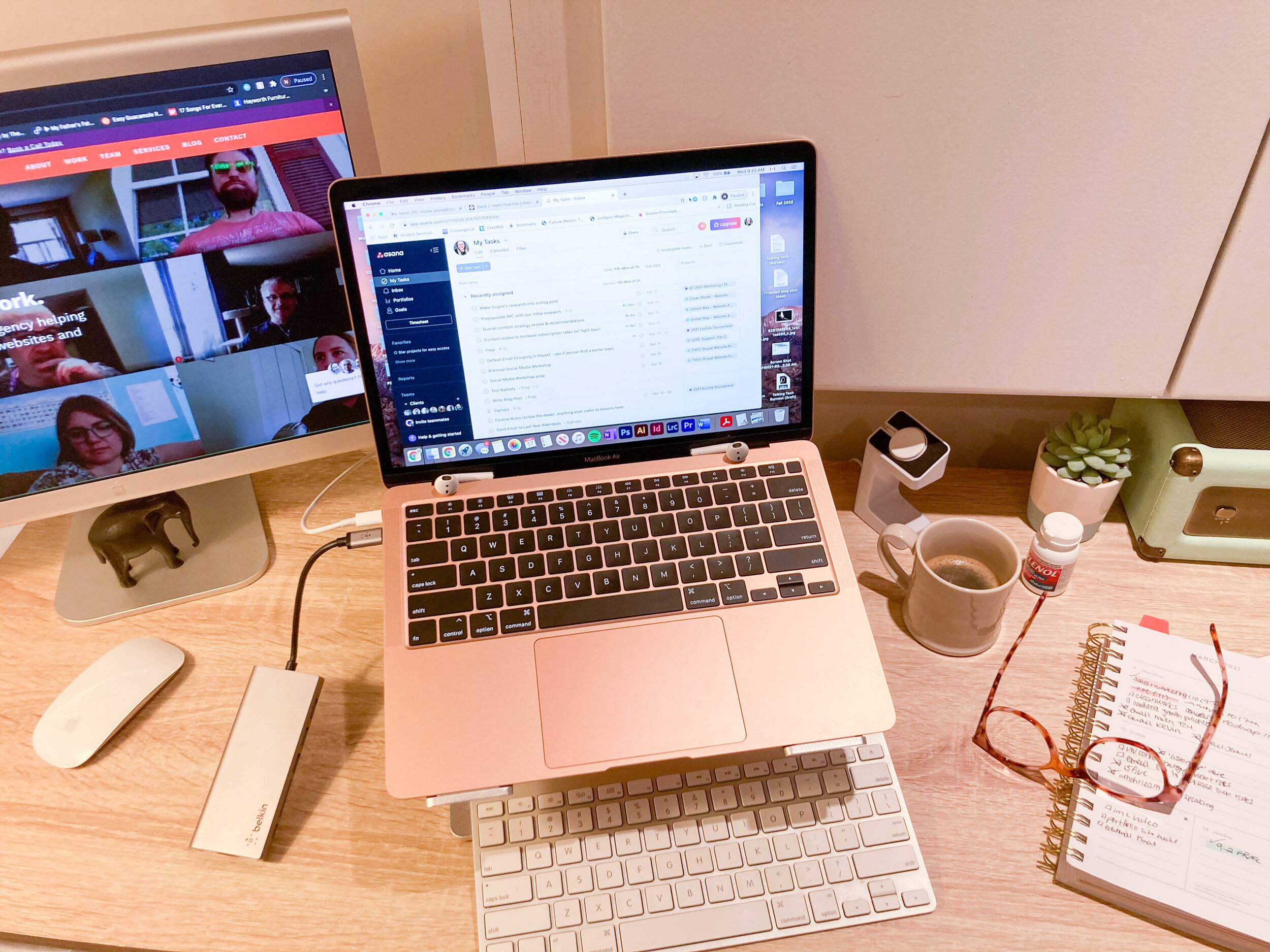How to Tackle Burnout Culture in the Tech Industry

You can feel the muscles in the back of your neck tightening, your head begins to throb and before you know it, you’ve hit that proverbial wall. The relentless ping of multiple inboxes and a calendar notification for that last minute meeting you forgot you agreed to serves as a cruel reminder that there is no time to listen to these physical bodily warning signs.

It’s not surprising this reality has become too much to bear for many of us. While stress is an inevitable aspect of any job, the burnout spiral has become a growing epidemic that has been declared a legitimate syndrome by The World Health Organization.
A survey conducted by Blind revealed that tech workers reported higher levels of stress than frontline health care workers, with nearly 60 per cent admitting to feeling burnt out. In an industry marked by demanding deliverables, high stress and mounting pressure to succeed, it’s no wonder this 24/7 work culture has had a substantial impact on employee mental health. The challenges posed by a global pandemic has further displaced organizations and their employees to work from home, adding an extra layer of stress to an already overworked industry.
Adding fuel to the fire, many are finding it difficult to step back mentally, as the line between work/home has blurred and working parents have had to deal with the stressors of juggling childcare and online schooling. If this sounds familiar, check out some of our tips for effectively working from home.
Amidst trying to keep pace with the ‘hustle culture’, many have neglected their own physical health. In an interview with Bloomberg, Google Alum Marissa Mayer attributed her success to the value of hard work and cognitively-gruelling 130-hour work weeks. While many jokingly concede that they can simply give up sleep and trips to the bathroom, this industry culture is revelatory of an unsustainable workforce on the brink of exhaustion.
Nothing kills momentum on a project quite like a team that has no creative fuel left in their tank. Burnout has been a topic of concern in the tech industry for years, which has been characterized by an ‘always on’ culture which normalizes excessive work hours as productive, when in reality this type of workload is unsustainable long-term and can have adverse effects on productivity.
Most concerning, burnout can have a detrimental impact on productivity and morale, which can seriously impede an organization’s ability to meet business objectives. The flickering flames of burnout can seriously undermine employees’ ability to work effectively, leading to feelings of exhaustion, cynicism, and an inability to concentrate and engage meaningfully in their work.
Ironically, those who are feeling it the most are the ones who are still caught up in the grind. In a survey conducted by The Society for Human Resource Management, 41 per cent of employees reported feeling burnt out or exhausted from their work. The psychological costs of burnout have only been further heightened by the pandemic, as 23 per cent of employees surveyed cited feeling depressed or hopeless often. Even more startling, 1 in 3 of these employees reported they did nothing to combat their stress.
Burnout can manifest into a slew of physical and mental health issues, which left unchecked can create enormous occupational concerns. Crippling headaches, nagging neck pain, insomnia or a persistent lack of motivation can bring peak performers’ output to a grinding halt and these red flags shouldn’t be ignored.
While stress will inevitably rear its ugly head, here are some of our suggestions for taking down tech burnout:
Manage your expectations.
While it’s great to have an ambitious plan for the day, keep your to-do list realistic. Prioritize one or two key goals that can be realistically achieved in the span of the work day. As unplanned tasks will inevitably find you, a tentative plan will keep you motivated to stay on track. Consider using a browser extension like Momentum which allows you to transform your tabs into a focused and inspiring dashboard. The platform encourages you to set a main focus and provides fantastic visuals and quotes to power you through your to-dos.
Time-management tools like Everhour are also great to incorporate if you are struggling to keep yourself accountable and can be integrated into existing workflow platforms such as Asana and Basecamp for a more streamlined task flow.
Know your limits.
While we’d love to believe we can do it all, if it’s out of your current capacity, say so. Although tech industry culture tends to reward stress as a daily reality, avoid taking on extra projects that will impede your ability to produce quality work. If this means offloading non-priority tasks to a colleague who can help relieve some pressure, take a step back to evaluate your priorities and delegate when possible.
Make a regular habit of walking away from your desk at hourly intervals to do some stretching. While that email might not reply to itself, you’ll come back refocused. Even more importantly, designate a portion of your day to non-screen hours that includes time away from your inbox.
Communicate your concerns & prioritize checking in with your team.
Burnout can be activated by feelings of inefficacy, particularly if you feel like you lack the resources to do your job well, including adequate time, clear expectations, and good relationships with colleagues. If you are feeling overworked, be rational about why you are deserving of a break and how this will impact your success going forward upon your return.
Make a concerted effort to connect with your manager about how you’re feeling at work. 15five is a great tool that helps prioritize employee performance and engagement and promotes a more transparent work culture through quick weekly check-in reports. This platform provides insightful feedback questions that are fully customizable and is a useful tool to stimulate important conversations about employee morale and job satisfaction.
Find ways to encourage wellness and work-life balance
Wellness challenges offer balance and restoration for overstimulated employees and inspire meaningful participation outside of work-related tasks. Consider some healthy competition to motivate workers to unplug. Here at rTraction, we love a good challenge, so that’s why we recently committed to (virtually) tackling the Bruce Trail.
By striking an effective balance between self-care, exercise and nutrition, your team will be more energized and connected as a whole. If this doesn’t realistically fit into your current routine or challenges aren’t really your jam, find a small window to get some fresh air during your lunch break and prioritize intentional time away from your workspace, even if just for a few minutes.
On the topic of self-care, consider decreasing your alcohol and caffeine intake. While this is naturally much easier said than done, that extra cup of coffee can lead to an increased dependency during stressful times and can worsen associated burnout symptoms.
Burnout can feel overwhelming, but recognizing that you or your team are in need of recharging is an important step in mitigating the long-term effects of stress. As the reality of remote work as the ‘new normal’ has set in, maintaining a solid work/life balance is crucial to beating burnout and keeping your team motivated and productive. While it’s easy to give into the pressure to keep the candle burning, it’s important to recognize the signs of burnout before there is no spark left to ignite.
